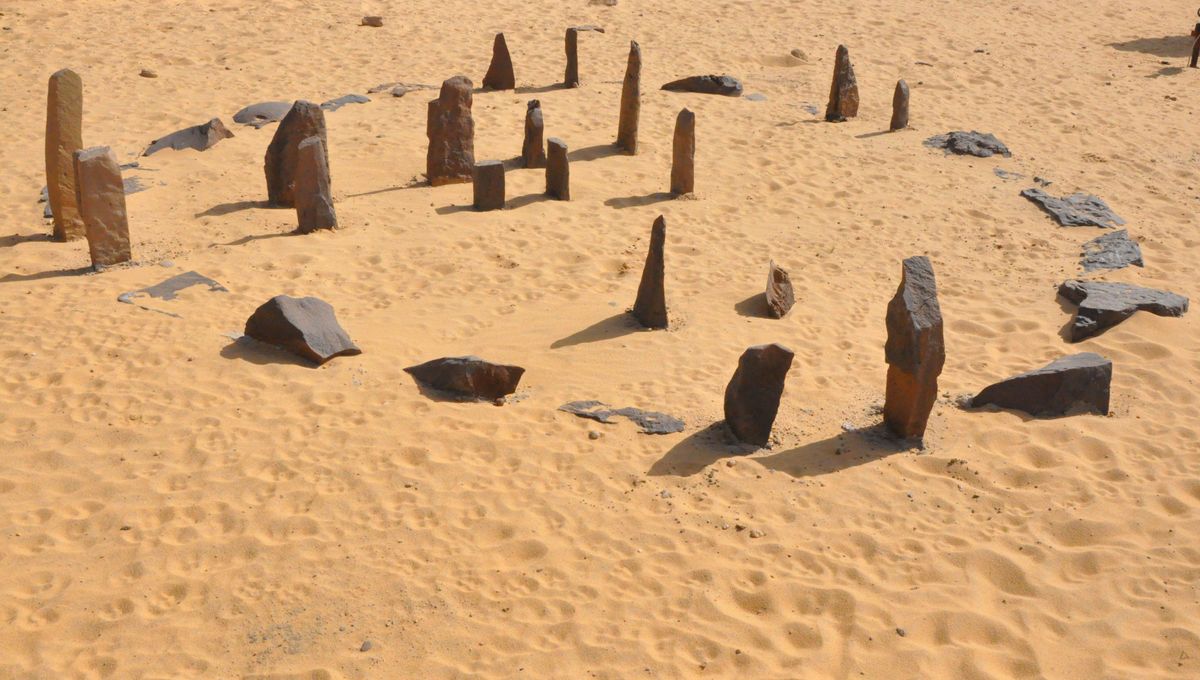
Thousands of years before Stonehenge was completed – and thousands of kilometers from southern England – another culture built a strikingly similar ring of stones in another possible attempt to track the Sun’s movements and the changing seasons.
ADVERTISEMENT
Nabta Playa is an ancient site nestled within a basin of the Nubian Desert near Egypt’s southern border. Since its discovery in the 1970s, archaeologists have unearthed hundreds of hearths, cultural artifacts, and cattle bones dating back to the mid-Neolithic period, suggesting that nomadic peoples visited the site at specific times of the year to rehydrate, recuperate, and reflect.
Once a vital watering hole for passing tribes, the basin evolved into a significant landmark. Here, ancient builders erected at least three groups of megalithic stone circles, earning it the fitting nickname: the “Stonehenge of the Sahara”.
As per a 1998 study of the site, each of the structures “consist of several large, roughly shaped sandstone blocks set on edge to frame an oval area about 5 to 6 meters [16 to 19 feet] long and 4 to 5 meters [13 to 16 feet] wide, in the center of which is a large, north-south oriented, rectangular slab.”
The site was likely built over 7,000 years ago by the Ru’at El Baquar, a nomadic cult of cattle worshippers who are thought to have used it to trace the Sun’s movement and to predict the arrival of monsoons. At that time, the current desert location was not an arid desert, but a fertile area that transformed into a lake during the wet seasons.
In both form and possibly function, it’s similar to Stonehenge, the famous structure of southern England that started to be built around 3100 BCE and continued until about 1600 BCE. Like Stonehenge, it might have also been used to celebrate astronomical events. If true, that would make it the oldest astronomical observatory on planet Earth.
“Here is human beings’ first attempt to make some serious connection with the heavens,” J. McKim Malville, a Professor Emeritus of Astrophysical and Planetary Sciences at the University of Colorado, told Discover.
ADVERTISEMENT
“They used the stars to travel across the desert to locate small watering holes like Nabta Playa, which had water about four months of the year, probably, starting with the summer monsoon,” Malville added.
Not everyone agrees with this interpretation though. Another theory proposes that the stones served as a memorial to the dead, yet with no human remains found beneath them, the site would have been a symbolic necropolis rather than a traditional graveyard.
Either way, Nabta Playa is home to some of the most remarkable and oldest megalithic structures of their kind. It wouldn’t be for another 2,500 years or so that the Pyramids of Giza rose in their glory, highlighting how this part of North Africa has been a cradle of human history for millennia.
Source Link: Nabta Playa: "Stonehenge Of Sahara" Was Built Thousands Of Years Before England's